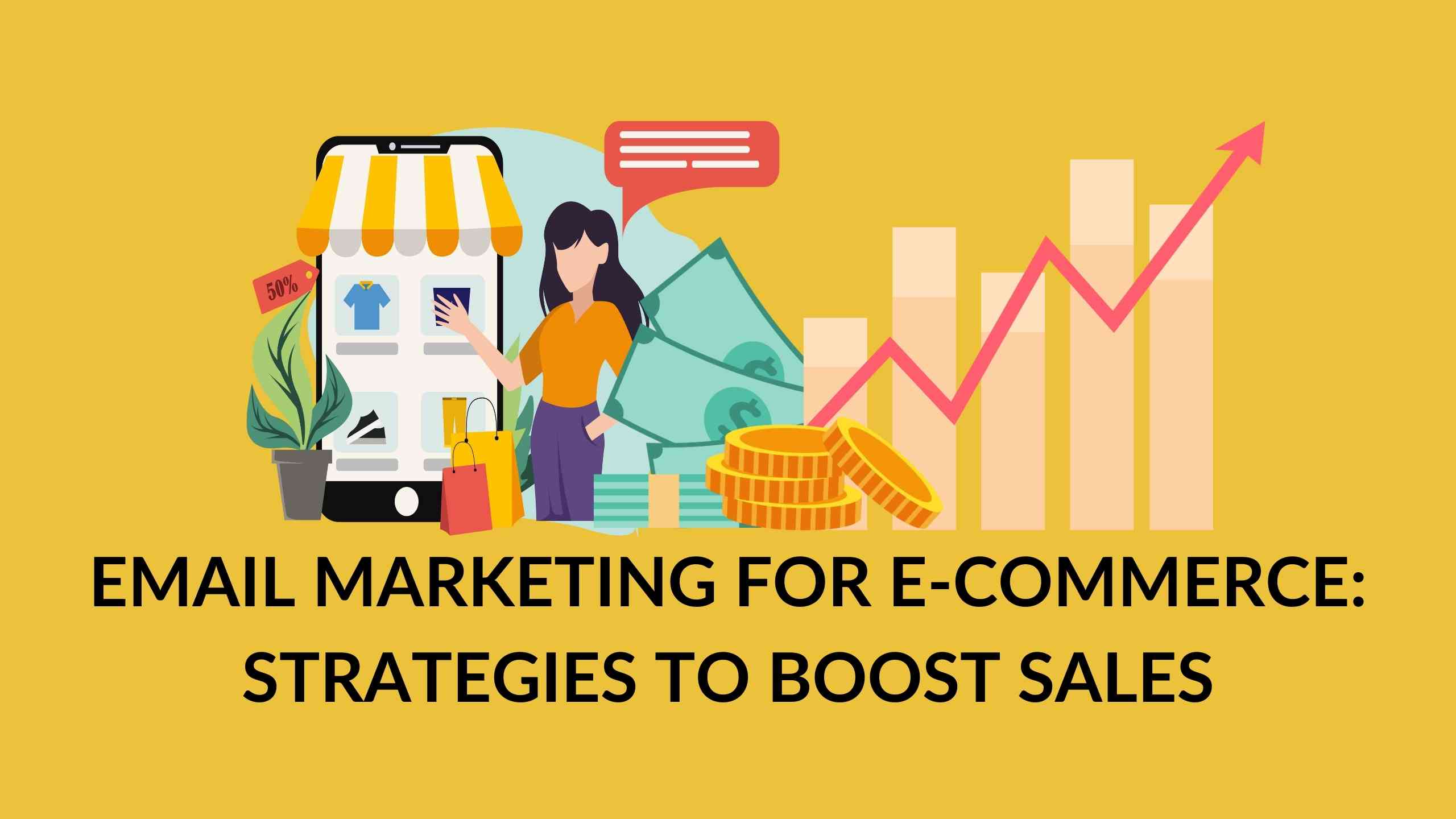Email Marketing for E-commerce: Strategies to Boost Sales
- Conversational Marketing Software SEO Software Affiliate Marketing Software Marketing Tools


Email Marketing for E-commerce: Strategies to Boost Sales
In the fast-paced realm of e-commerce, fostering meaningful relationships with customers is paramount. Email marketing emerges as a potent and indispensable tool for online brands. Despite the surge of social media, research underscores that email marketing is 40 times more effective in acquiring new buyers than social networks like Twitter and Facebook. This age-old form of marketing continues to yield the highest Return on Investment (ROI) when wielded with precision. In this post, we unveil ten effective e-commerce email marketing strategies to help you unlock the full potential and propel sales for your online store.
1. Create a Welcome Email Series
When a shopper subscribes to your e-commerce email marketing, crafting a lasting first impression is pivotal. Instead of inundating new subscribers with a single welcome email, consider implementing a Welcome Email Series. This series introduces your brand, sets customer expectations, and highlights what sets your e-commerce store apart. By consistently showcasing your brand to new subscribers, trust is built, fostering positive interactions.
Related Resources: ActiveCampaign – Welcome Email Series
2. Practice E-commerce Email Segmentation
E-commerce email segmentation involves categorizing subscribers based on defined qualities, allowing for advanced personalization. Effective segmentation goes beyond demographics, incorporating psychographics like lifestyle and behavior. By tailoring email messages to specific groups, you can enhance engagement rates and, ultimately, boost sales revenue.
Related Resources: LinkedIn – E-commerce Email Marketing Strategies
3. Reward Loyal Customers
While acquiring new customers is vital, repeat customers play a pivotal role in the success of an online store. Acknowledge and reward their loyalty through e-commerce email marketing. Send them exclusive discounts, previews of new products, or personalized celebrations of special occasions like birthdays and join-dates.
Related Resources: SendPulse – E-commerce Email Marketing Glossary
4. Use a Well-Designed and Responsive Email
In a world where nearly 50% of emails are opened on mobile devices, it’s crucial for your e-commerce emails to display properly. Ensure a seamless inbox experience to improve email deliverability and boost sales conversion rates.
Related Resources: Neil Patel – Maximize E-commerce Store Sales with Email Marketing
5. Split Test Your E-commerce Email Campaigns
E-commerce email split testing involves sending different variations of an email to subsets of your subscribers to determine which version yields the best results. Test elements like subject lines, email length, visuals, and calls-to-action to optimize your email campaigns.
Related Resources: BigCommerce – E-commerce Email Marketing Strategy
6. Send Back-in-Stock Alert Emails
Instead of hiding out-of-stock products, inform customers about the unavailability and provide an option to submit their email for notifications when the product is back in stock.
7. Send an Abandoned Cart Email Series
Combat the approximately $18 billion lost annually to abandoned carts in the e-commerce industry by implementing an abandoned cart email series. These emails can nudge shoppers to return to your store and complete their purchases, recovering potentially lost revenue and enhancing the overall customer experience.
8. Take Advantage of Seasonal Promotions
Leverage seasonal promotions in your e-commerce email marketing to capitalize on festive seasons and holidays. For instance, the last two months of the year, being festive, can drive up to 30% more revenue.
Related Resources: ActiveCampaign – E-commerce Email Marketing Blog
9. Track Your Results
Constantly track key metrics such as open rate, click-through rate, conversion rate, and unsubscribe rate to optimize your e-commerce email marketing efforts.
Related Resources: LinkedIn – E-commerce Email Marketing Strategies
10. Leverage E-commerce Email Marketing Automation
Implementing these strategies might seem time-consuming, but utilizing email marketing automation tools can save time and allow for easy scaling of campaigns as your e-commerce store grows.
Conclusion:
Growing your email list is just the beginning; keeping subscribers engaged is the ongoing challenge. Regular monitoring and optimization of your e-commerce email marketing activities are essential for maximizing your return on investment. If you find the process overwhelming, consider a custom e-commerce email marketing solution to help you acquire and engage subscribers effectively.
For more insights and resources on e-commerce email marketing, explore the following links:
- ActiveCampaign – E-commerce Email Marketing Blog
- SendPulse – E-commerce Email Marketing Glossary
- Neil Patel – Maximizing E-commerce Store Sales with Email Marketing
- LinkedIn – E-commerce Email Marketing Strategies
- BigCommerce – E-commerce Email Marketing Strategy





